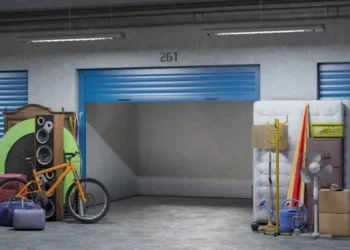Car accidents are a distressing reality for many individuals, often leaving victims grappling with physical injuries, emotional trauma, and financial setbacks.
In such challenging times, understanding your rights and dispelling common misconceptions surrounding car accident lawsuits becomes crucial. Navigating the legal system may be difficult, and inaction might result in missed possibilities for compensation.
In this post, we aim to shed light on your rights following a car crash and dispel common myths. This will provide you with the knowledge you need to make educated decisions during these trying times.
Understanding the Basics
Following a car accident, one of the basic rights granted to victims is the ability to pursue compensation for any damages they have suffered. This compensation typically covers medical costs, lost wages, property damage, and even intangible damages like pain and suffering.
To exercise this right effectively, it’s crucial to understand the basics of filing a claim. First and foremost, documenting the details of the accident is essential. Gathering evidence such as pictures, witness accounts, and police records can help you win your case.
It is also critical to get medical assistance as soon as possible since a full medical record might serve as critical evidence. It is critical to establish culpability while seeking compensation. Identifying the party responsible for the accident is critical for building a solid claim. Gathering data, talking with experts, and negotiating with insurance companies may all be part of the process.
Misconceptions About No-Fault Systems
A common misconception is that living in a no-fault insurance state means victims cannot seek compensation from the at-fault party. In reality, no-fault systems are designed to streamline the claims process and provide prompt compensation for minor injuries. However, they don’t entirely eliminate the possibility of legal action.
Bankrate notes that no-fault insurance does not cover damages beyond the limit of your policy. However, if your injuries exceed this limit, you may have the right to file a lawsuit against the at-fault party to seek additional compensation. This additional compensation usually covers non-economic damages like pain and suffering.
Navigating the complexities of no-fault systems requires a nuanced understanding of the laws in your jurisdiction. Consulting with a knowledgeable attorney can help clarify your rights and guide you through the process of seeking maximum compensation.
Debunking Myths Regarding Insurance Companies
Dealing with insurance companies can be a daunting aspect of the post-accident process. Contrary to common misconceptions, insurance companies are not solely focused on minimizing payouts.
While they aim to assess claims accurately, it’s crucial for victims to not accept settlements that do not fully cover their damages. Understanding the claims process is key.
Also Read: Tips For Finding the Right Class Action Attorney
Victims should be proactive in communicating with their insurance company, providing all necessary documentation, and adhering to deadlines. Additionally, it’s important to be cautious during recorded statements, as insurance adjusters may use them to limit liability.
Timelines and Statutes of Limitations
One critical aspect that often catches individuals off guard is the importance of adhering to specific timelines when filing a car accident lawsuit. The time frame within which a lawsuit must be filed is governed by statutes of limitations in each state.
According to FindLaw, Missouri has a five-year statute of limitations for personal injury cases. In order to make a claim, victims of car crashes have five years from the date of the occurrence to do so. You might forfeit your entitlement to compensation if you don’t file a case within this time frame.
St. Louis is one of the cities in Missouri that has a significant number of car accidents each year. In such cases, victims need to be aware of the time constraints imposed by Missouri’s statutes of limitations. This is where the expertise of a local car accident lawyer becomes invaluable. TorHoerman Law notes that these legal professionals are well-versed in the unique timelines that govern personal injury claims in Missouri.
This assures that you do not miss the opportunity for legal remedies. A St. Louis car accident lawyer can walk you through the whole procedure, from gathering evidence to completing the essential papers within the deadlines. They can assist you in navigating the complexities of Missouri law in order to preserve your rights properly.
Starting proceedings as soon as possible allows for a comprehensive investigation, evidence collecting, and preparation of a solid case. Early consultation with an attorney can help you manage these timelines and guarantee that your rights are safeguarded.
Misconceptions Regarding Comparative Negligence
Another common misconception is that being partially at fault for an accident means relinquishing the right to compensation. The Legal Information Institute notes that several states follow the pure comparative negligence rule, which determines compensation based on each party’s degree of fault.
Understanding pure comparative negligence is crucial for victims who may share some responsibility for the accident. In such instances, the compensation granted is proportional to the amount of fault attributed. If you are determined to be, say, 20% at blame, your compensation will be reduced by that proportion.
This nuanced concept emphasizes the importance of a thorough investigation to accurately determine each party’s degree of fault. Seeking legal counsel can be instrumental in navigating the complexities of comparative negligence and ensuring fair compensation for the victim.
Alternative Dispute Resolution (ADR)
Car accident lawsuits don’t always have to culminate in a courtroom battle. Alternative dispute resolution (ADR) methods provide viable alternatives, and parties involved can explore options like mediation or arbitration. Through mediation, an impartial third party assists in discussions toward a resolution that both sides can agree upon.
Arbitration, on the other hand, is more formal, resembling a mini-trial where an arbitrator makes a binding decision. Engaging in ADR can have several advantages, including faster resolution, reduced costs, and a more collaborative process. However, it’s essential to carefully consider the specifics of your case and consult with legal counsel to determine the most suitable approach.
Understanding these alternative avenues for dispute resolution empowers individuals to make informed decisions about the trajectory of their case. This can potentially lead to a more efficient and satisfactory resolution without the need for protracted litigation.
Also Read: 5 Common Mistakes When Choosing a Family Law Attorney
In conclusion, post-car accident scenarios demand a clear understanding of rights and dispelling misconceptions. From the complexities of no-fault systems to the significance of adhering to statutes of limitations, knowledge is crucial.
Consulting a skilled attorney and exploring alternative dispute resolution methods can greatly influence case outcomes. Empowering oneself with accurate information ensures informed decision-making, safeguarding rights, and optimizing the potential for fair compensation.
Proactive engagement in the legal process is essential for a comprehensive and just resolution in the face of these challenging circumstances.








